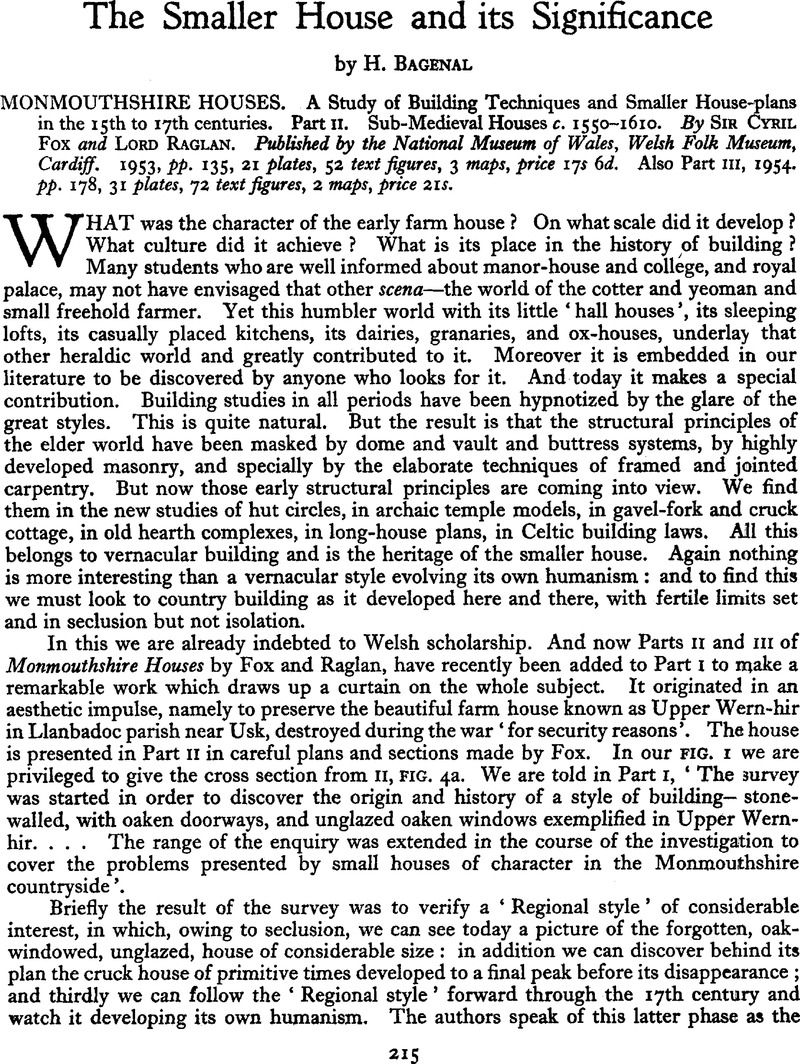No CrossRef data available.
Article contents
The Smaller House and its Significance
Published online by Cambridge University Press: 02 January 2015
Abstract

- Type
- Review Article
- Information
- Copyright
- Copyright © Antiquity Publications Ltd 1955
References
1 The ‘blue house’ at the Netherland Folk Museum, removed to Arnhem in this century is said to have been in use without flues up to the time of its removal. For a thorough study with plans of this type see Lindner, W. ‘Das Niedersachsische Bauernhaus in Deutschland und Holland’, Ernest Geibel. Hanover, 1912.
2 There is also a modern application. When the close attention to stock by peasant owners in a severe climate breaks down, then the quality of the breed and the quantity of milk and butter and eggs for public supply is liable to decline : this seems to be the result of collective farming in Russia, and one of the causes of the agricultural crisis.
3 In Cornwall and Devon the waller’s craft goes back to old ‘cyclopean’ techniques, and tends to be an extension from field clearing and field walling to farm building generally. Our authors do not clearly inform us whether their Monmouthshire footing walls, and battered walls, are primitive in origin or derived from medieval guild building.


